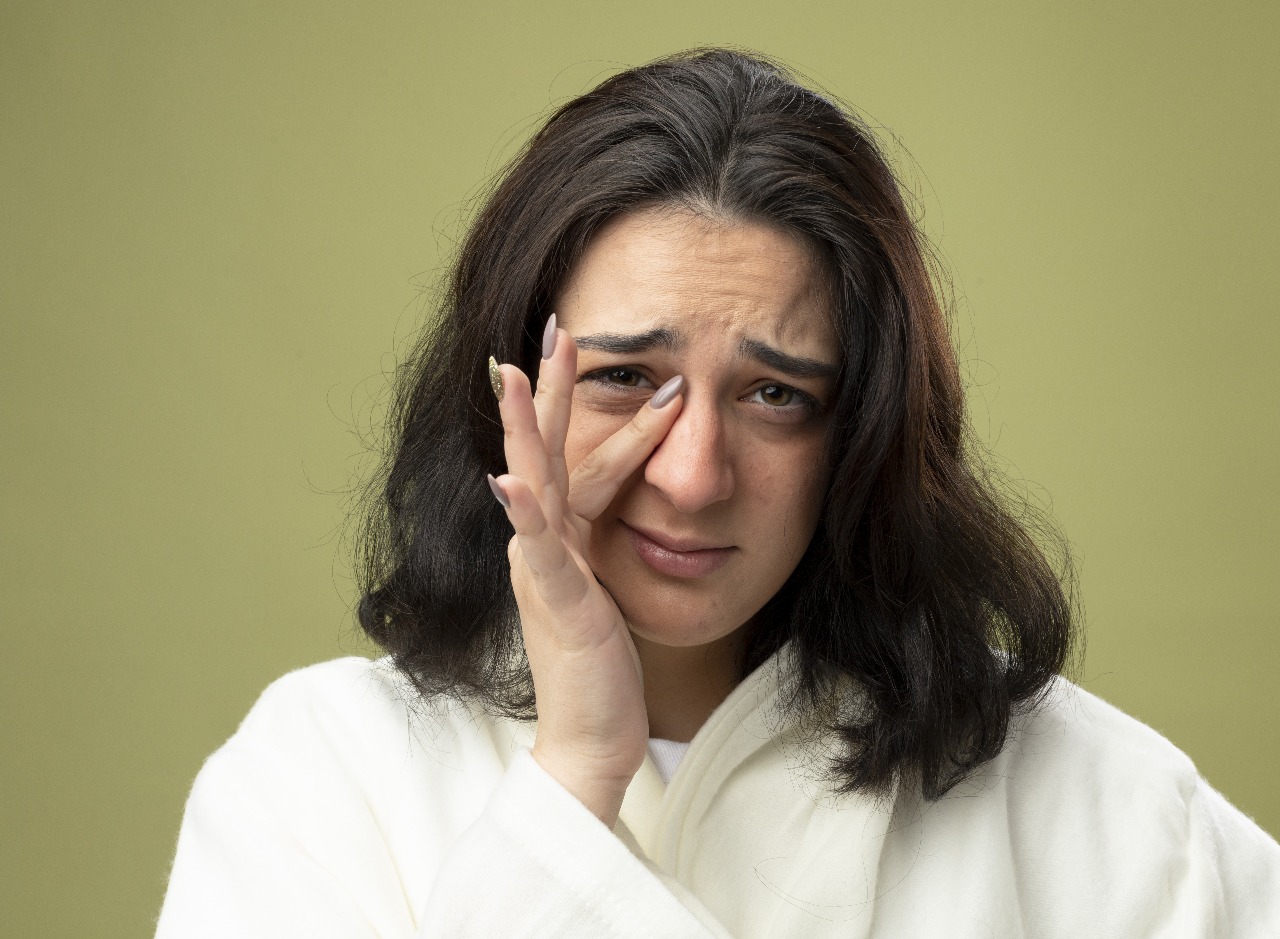Understanding Watery Eyes
What Are Watery Eyes?
Watery eyes, also called epiphora, happen when too many tears come out or tears don’t drain properly. Tears are important because they keep our eyes wet, clean, and safe from dust and germs. Normally, tears flow out through tiny drains in the corners of our eyes. But if something blocks these drains or if the eyes make too many tears, they spill over, making the eyes feel too watery.
Anatomy of Tear Production
Tears come from tiny glands above each eye, called tear glands. These glands make a special mix of water, oil, and mucus to keep our eyes comfortable. Every time we blink, tears spread across the eye to keep it moist and clear.
After that, tears drain through tiny holes in the corners of the eyes into the nose, that’s why our nose sometimes runs when we cry. If these drains get clogged or don’t work properly, the tears can’t go away, and the eyes stay too watery.
Common Causes of Watery Eyes
Environmental Factors
Sometimes, the environment around us can make our eyes watery. Allergens like pollen, dust, and pet hair can make the eyes itchy and watery, especially for people with allergies. Irritants such as smoke, strong winds, and bright lights can also cause extra tears because the eyes are trying to protect themselves.
Medical Conditions
Some eye conditions can lead to watery eyes. Dry Eye Syndrome might sound surprising, but when the eyes are too dry, they make extra tears to fix the problem. Blepharitis, which is swelling of the eyelids, and conjunctivitis (also called pink eye) can also make the eyes red, itchy, and watery.
Sometimes, the problem is with the tear drainage system. Blocked tear ducts stop tears from draining, so they spill out instead. Eyelid issues like ectropion (when the eyelid turns outward) or entropion (when the eyelid turns inward) can also mess with tear flow, leading to constant watery eyes.
Lifestyle Factors
What we do every day can affect our eyes, too! Staring at screens for too long can make the eyes tired and watery because we blink less, which dries them out. Also, wearing old or damaged contact lenses can irritate the eyes, causing more tears as the eye tries to wash away the discomfort.
Diagnosing the Reason for Watery Eyes
When to See a Doctor
Watery eyes usually go away on their own, but sometimes, they can be a sign of a bigger problem. You should see a doctor if your eyes stay watery for a long time or if you have other symptoms like pain, swelling, redness, or blurry vision. If your watery eyes make it hard to see or do daily activities, it’s important to get checked by an eye specialist.
Diagnostic Procedures
To find out what’s causing watery eyes, the doctor may do an eye exam to check your tear production and eye health. If a blocked tear duct is suspected, they might use tear duct imaging tests, which involve special dyes or tiny instruments to see if there’s a blockage. If allergies might be the cause, an allergy test may be done to identify triggers like pollen or pet dander.
Watery Eyes Treatment Options
Medical Treatments
If watery eyes don’t go away on their own, doctors may recommend medical treatments. Prescription eye drops help control excessive tearing, especially if it’s caused by dry eyes or inflammation. If an infection like pink eye is the cause, antibiotic eye drops or pills may be needed. In some cases, when there is a blocked tear duct or eyelid issue, surgery might be necessary to fix the problem and help tears drain properly.
Over-the-Counter Solutions
For mild cases, over-the-counter treatments can help. Lubricating eye drops (also called artificial tears) keep the eyes moist and comfortable, especially for dry eye syndrome. If allergies are causing watery eyes, antihistamine eye drops or pills can reduce itching and tear overproduction.
Home Remedies and Lifestyle Changes
Some simple home remedies can also help with watery eyes. Warm compresses can soothe the eyes and help unclog blocked tear ducts. Keeping eyelids clean with gentle washing can prevent irritation and infections. If too much screen time is the problem, taking breaks and adjusting screen height can reduce eye strain and excessive tearing.
Preventing Watery Eyes
Environmental Adjustments
Making small changes in your surroundings can help keep your eyes comfortable. Using a humidifier adds moisture to the air, stopping your eyes from drying out and making too many tears. Wearing protective eyewear, like sunglasses or safety glasses, can keep wind, dust, and other irritants from bothering your eyes.
Routine Eye Care
Taking care of your eyes every day helps prevent problems. Getting regular eye check-ups allows doctors to find and fix any issues early. If you wear contact lenses, changing them on time and keeping them clean prevents irritation and infections that can make your eyes watery.
At Shree Ramakrishna Netralaya, the best eye care hospital in Mumbai, we ensure your eyes stay healthy and comfortable. Trust us for expert care and long-term solutions!
Frequently Asked Questions (FAQs)
Watery eyes can be caused by allergens, infections, dry eyes, blocked tear ducts, or too much screen time. The eyes make extra tears to protect themselves from irritation.
Yes, using the wrong eye drops or overusing them can cause more irritation. It’s important to choose the right drops based on the cause of watery eyes.
Avoid allergens like pollen and dust, and use antihistamine eye drops if needed. Keeping windows closed and wearing sunglasses outdoors can also help.
Surgery is needed only if the blockage doesn’t clear on its own. Doctors may first try massage, warm compresses, or minor procedures before recommending surgery.
Using eye drops, warm compresses, and avoiding screen strain can help. In severe cases, doctors may recommend tear duct plugs or prescription treatments.

